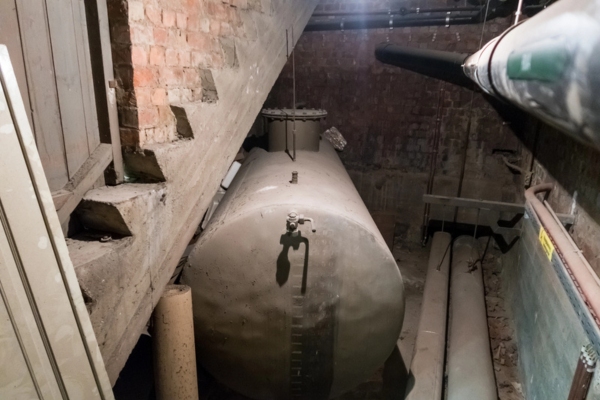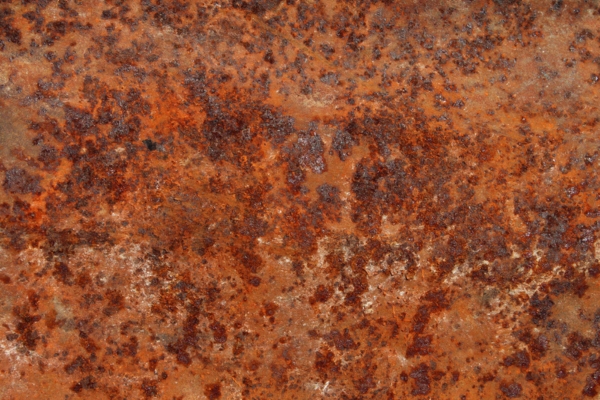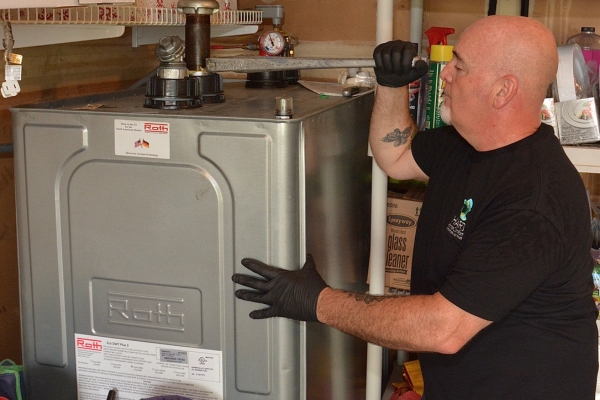Protecting Your Heating System From Water In Oil Tanks

Moisture inside an oil tank can cause expensive problems and reduce the efficiency of your heating system. At Hart Home Comfort, your trusted heating oil provider in Nassau County, Suffolk County, and Queens, New York, we help homeowners identify the causes of water entering their oil tanks and share effective ways to safeguard their systems.
This article explores the typical sources of water in oil tank, including condensation inside the tank and infiltration from outside leaks, while outlining practical measures to maintain fuel quality and avoid expensive damage. By taking proper precautions, you can keep your system protected and operating efficiently all year long.
Dependable Heating Oil Service: Protect your tank from moisture issues by scheduling a delivery with Hart Home Comfort today! Call now!
Oil Tank Water Issues: Where Does It Come From?
Table of Contents
- 1 Oil Tank Water Issues: Where Does It Come From?
- 2 Effects of Water Contamination in Residential Oil Tanks
- 3 Preventing Issues with Professional Oil Tank Care
- 4 Water in Oil Tank: Frequently Asked Questions
- 4.1 How Do I Identify Hidden Water in an Underground Oil Tank?
- 4.2 Can Water in My Oil Tank Harm My Heating System?
- 4.3 What Are the Signs of Water-Related Fuel Contamination in My Tank?
- 4.4 Which Maintenance Steps Improve Your Tank’s Resistance to Moisture?
- 4.5 Are Modern Oil Tank Designs Better at Preventing Water Intrusion Than Older Ones?
- 5 Conclusion
- 6 Contact Hart Home Comfort for Reliable Heating Oil Delivery

Water can enter your oil tank through several pathways, and recognizing these causes is essential to protecting your system. Here is a closer look at how moisture finds its way inside and what steps you can take to manage these problems effectively.
Safeguard Your Heating System with Professional Oil Tank Care: Rely on us for inspections, service, and installations. Reach out to Hart Home Comfort today!
Moisture Formation from Tank Condensation
Condensation in a heating oil tank happens when warm indoor air meets the cooler surface of the tank, leading to water droplets forming. This issue is more frequent when there is a strong difference between the indoor temperature and the tank’s exterior surface.
Furthermore, excess air space above the oil can trap humidity, creating a layer of moist air that drives repeated condensation cycles and results in greater water accumulation inside the tank.
Inadequate airflow around the tank can worsen the issue by keeping damp air pressed against its surface, stopping it from dissipating and enabling condensation to persist. Over time, this trapped moisture accumulates inside, contaminating the heating oil and reducing the system’s efficiency.
Compromised Oil Tank: Defective or Absent Vent and Filler Caps

A faulty seal on the filler cap or missing vent caps can expose a heating oil tank to water contamination. Damaged gaskets around the filler opening make it possible for rain or melting snow to seep inside, introducing external moisture into the tank.
When vent caps on fill ports or breathing vents are loose, improperly fitted, or absent, the risk of moisture infiltration rises. These openings allow humid air and water to enter, contaminating the fuel supply.
If zinc flappers become blocked or corroded, they can no longer stop moisture from entering, leaving the tank vulnerable and at risk of lasting damage. Routine checks of the tank’s breathers and seals are crucial to guard against moisture problems and maintain system reliability.
Upgrade to a Reliable New Oil Tank: Replace your old system with a top-quality model. Call Hart Home Comfort today!
Heating Oil Tank Damage from Cracks and Weld Failures
Structural problems in heating oil tanks often stem from corrosion. Rust that forms beneath paint or insulation can eventually create pinholes and cracks, letting moisture enter and contaminate the fuel. Weld seam failures pose another serious risk, as stress points along factory seams or repair welds may weaken and split over time, leading to leaks.
In addition, physical damage caused by impacts or shifting foundations can fracture the tank walls. These issues, including corrosion cracks and weld seam leaks, undermine the tank’s stability and may result in expensive repairs and fuel contamination.
Outside Water Entering a Fuel Oil Tank

Water from external sources can find its way into a fuel oil tank, creating contamination issues. Flooding in basements or periods of heavy rain can submerge the tank, with floodwater seeping inside through compromised seals or small gaps.
For underground tanks, elevated water tables can force groundwater through unsealed areas of the tank walls, resulting in serious contamination. Poor drainage around the installation, often caused by improper grading or missing gutter systems, worsens the problem by allowing water to collect near the tank. This pooled water heightens the likelihood of leaks and moisture intrusion. Ensuring proper drainage around the oil tank is vital to keep water out and preserve fuel quality.
Avoid Interruptions with Timely Oil Deliveries: Keep your tank protected and full throughout the season. Contact Hart Home Comfort today!
Impact of Environment and Location on Oil Tanks
An oil tank’s surrounding environment and placement play a major role in water infiltration risks. Coastal and tropical regions with consistently high humidity levels expose tanks to greater moisture, which increases condensation inside. Likewise, tanks positioned indoors near humid areas such as bathrooms or laundry rooms face added exposure, often resulting in higher levels of moisture accumulation within the tank.
Shifts in seasonal temperatures further heighten the risk of condensation, as quick changes between warm and cold conditions cause airborne moisture to collect on the tank’s surfaces. Recognizing these climate-related moisture factors and indoor humidity sources enables homeowners to take proactive measures to limit internal moisture accumulation and protect their fuel quality.
Effects of Water Contamination in Residential Oil Tanks

Water entering an oil tank can create serious problems for the tank and the heating system. The main consequences include:
- Microbial Growth and Sludge Formation: Water that settles at the bottom of the tank provides the perfect environment for microbes, often called the “diesel bug.” These organisms multiply in the water, producing sludge that builds up inside the tank. This sludge can block filters and interrupt the steady flow of fuel.
- Corrosion and Pitting in Heating Oil Tanks: Moisture trapped inside speeds up rust formation, causing corrosion and pitting along the tank walls. Over time, this deterioration weakens the tank’s structure, raising the risk of leaks and reducing its long-term dependability. This damage is a clear result of internal system corrosion.
- Heating Equipment Performance Problems: Water contamination often leads to clogged filters, burner misfires, and lower efficiency. These complications diminish system performance, resulting in more frequent service calls and increased upkeep expenses. Such effects of oil tank contamination can greatly affect a home’s heating reliability.
Complete Oil Tank Replacement Solutions: Count on Hart Home Comfort for expert installations and lasting reliability. Call us today!
Preventing Issues with Professional Oil Tank Care

Implementing preventative practices is key to keeping your oil tank free of water contamination and extending the life of your heating system. These care guidelines help avoid costly problems and support peak tank performance, including:
- Maintain Proper Oil Fill Levels: Keeping the tank filled above 80% capacity reduces excess air inside, limiting headspace moisture and lowering condensation risks. This prevents trapped humidity from building up.
- Use High-Quality Breather and Filter Systems: Adding desiccant breathers and water-separating filters to fill and fuel lines helps capture moisture before it enters the tank. These safeguards maintain cleaner fuel and block water infiltration.
- Schedule Routine Tank Inspections: Professional inspections are vital for long-term reliability. Regular checks of seals, vents, and structural condition catch problems early, preventing contamination and costly damage.
Preserve Fuel Quality All Year: Pair dependable heating oil delivery with expert tank inspections. Call Hart Home Comfort today!
Water in Oil Tank: Frequently Asked Questions

How Do I Identify Hidden Water in an Underground Oil Tank?
Trained professionals rely on specialized equipment such as water-detecting paste applied to dipsticks and electronic moisture probes to locate water buildup without excavation. These tools accurately reveal water layers that settle at the bottom of the tank, helping address contamination before it affects the burner.
Can Water in My Oil Tank Harm My Heating System?
Yes. Even minimal water presence encourages microbial growth, often called the “diesel bug,” which creates sludge that blocks filters and injectors. Water exposure can also corrode pump seals and nozzle assemblies, causing burner misfires, poor combustion, and, if ignored, costly repairs or complete equipment breakdown.
What Are the Signs of Water-Related Fuel Contamination in My Tank?
Several warning signs point to water contamination in heating oil. Cloudy or layered fuel samples taken with a clear syringe may reveal visible water or sediment buildup. Frequent filter blockages, even after replacements, often indicate debris or microbial sludge caused by moisture. A sooty or yellow-tinted flame is another clue, as water disrupts combustion and produces smoky exhaust. In addition, erratic burner cycling with short, uneven runs or difficult starts suggests that water interferes with steady fuel delivery.
Prevent Expensive Repairs: Upgrade corroded tanks before issues escalate. Schedule your oil tank replacement with Hart Home Comfort today!
Which Maintenance Steps Improve Your Tank’s Resistance to Moisture?
Maintaining high oil levels between 80–90% reduces empty space inside the tank where humid air can condense. Enhancing ventilation with exhaust fans or dehumidifiers and using foam insulation or jackets helps stabilize temperatures and lower condensation risks. Installing desiccant breathers and water-blocking filters prevents moisture from entering through the tank or fuel line.
Adding approved fuel treatments, such as anti-condensation and biocide additives, further protects by binding free water and suppressing microbial growth. When combined, these measures provide a strong and reliable defense against moisture buildup.
Are Modern Oil Tank Designs Better at Preventing Water Intrusion Than Older Ones?
Yes. Newer tanks are built with seamless factory welds, corrosion-resistant interior coatings, and advanced vent-cap designs that include moisture barriers. These improvements limit condensation and external seepage, making them far more effective at resisting water intrusion than older steel or uncoated models.
Conclusion
Moisture can infiltrate your oil tank through condensation, damaged caps, structural weaknesses, or unfavorable site conditions. These problems cause fuel contamination and reduce system efficiency, highlighting the importance of prevention in keeping your heating reliable. Consistent maintenance and professional inspections help you avoid expensive repairs and keep your oil tank in excellent working order.
Worried about water in your oil tank? Reach out to Hart Home Comfort in Nassau County, Suffolk County, and Queens, New York, today for thorough oil tank inspections, professional heating oil care, and dependable solutions. Count on our local experts to safeguard your heating system and ensure it operates efficiently year-round.
Trust Hart Home Comfort, Your Local Heating Oil Specialists: Arrange your next oil delivery today for reliable comfort. Call now!
Contact Hart Home Comfort for Reliable Heating Oil Delivery
Hart Home Comfort is committed to keeping homes and businesses across Nassau County, Suffolk County, and Queens, New York warm and comfortable with dependable heating oil delivery. We focus on providing high-quality fuel promptly and efficiently, so you enjoy consistent warmth without stress. Our exceptional services include competitive pricing and clear, straightforward options, always prioritizing your comfort.
We provide a selection of delivery plans and financing solutions, allowing customers to tailor their fuel supply to match their specific needs. Every homeowner receives attentive, personalized service to maintain comfort throughout the coldest months.
Along with heating oil delivery, Hart Home Comfort offers a complete range of HVAC solutions, making us your trusted partner for all home comfort needs. From installations and maintenance to urgent repairs, our skilled team is ready to handle all aspects of HVAC care.
By choosing Hart Home Comfort, you’re working with a reliable provider recognized for consistent service, customer-focused solutions, and lasting results. Get in touch with us today to schedule your next delivery or service appointment!
For any questions about what Hart Home Comfort can do for you, give us a call today. Click here to contact us now or call us at (631) 667-3200 to find out more! Click the link to view our service area.

Related Articles: